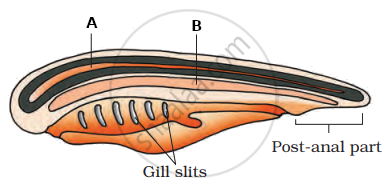Advertisements
Advertisements
प्रश्न
“All vertebrates are chordates but all chordates are not vertebrates.” Justify the statement.
उत्तर
- Animals classified as chordates have notochords, a stiff structure resembling a rod that is present on the dorsal side, at some point in their existence.
- Three Subphyla make up the Phylum Chordata: Urochordata, also known as tunicata, Cephalochordata, and Vertebrata. Protochordates are the only marine subphyla Urochordata and Cephalochordata, which are commonly referred to as such.
- In cephalochordata, the notochord extends from the head to the tail region and remains throughout the life, whereas in urochordata, it is only present in the tail of the larva and vanishes in adulthood.
- The notochord, which is present in Subphylum Vertebrata members during the embryonic stage, is replaced by a cartilaginous or bony vertebral column in adulthood. Therefore, all chordates are not vertebrates, but all vertebrates are chordates.
APPEARS IN
संबंधित प्रश्न
How important is the presence of air bladder in Pisces?
What are the modifications that are observed in birds that help them fly?
Could the number of eggs or young ones produced by an oviparous and viviparous mother be equal? Why?
The limbless amphibian is ______.
Which of the following is not correctly paired?
Pneumatic bones are seen in ______.
List the functions of air bladder in fishes.
Write the characteristics that contributes to the success of reptiles on land.
List the unique features of bird’s endoskeleton.
Which of the following is NOT a character of Chordata?
A and B are respectively represents?

Give the characteristic features of the following citing one example.
Urochordata and cephalochordata
Give three major differences between chordates and non-chordates and draw a schematic sketch of a chordate showing those features.
